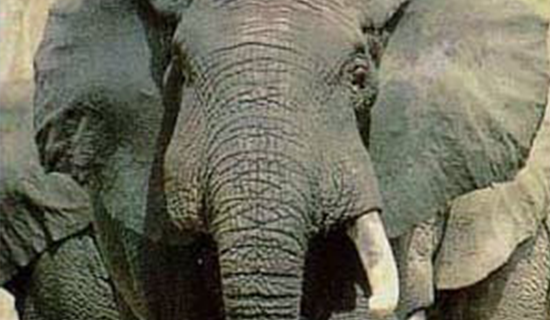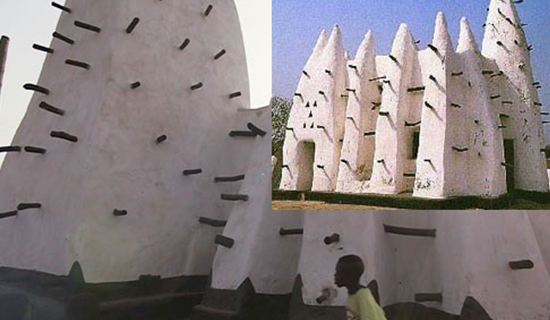TRAVEL & TOUR Work and Relaxation
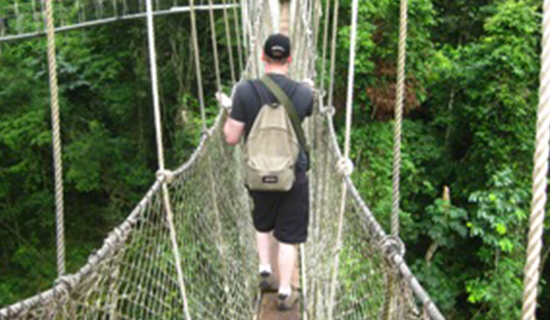

CASTLE AND FORTS
Ghana, a country on the West Coast of Africa, is one of the most thriving democracies on the continent. It has often been referred to as an “island of peace” in one of the most chaotic regions on earth. It shares boundaries with Togo to the east, La Cote d’Ivoire to the west, Burkina Faso to the north and the Gulf of Guinea, to the south. Recently, a team of oil exploratory giants of world acclaim -Kosmos Energy, discovered crude oil in the Gulf of Guinea .This had placed Ghana on the chart of oil producing and exporting countries.
The country’s economy is dominated by agriculture, which employs about 40 percent of the working population. Ghana is one of the leading exporters of cocoa in the world. It is also a significant exporter of commodities such as gold and lumber. A country covering an area of 238,500 square kilometers, Ghana has an estimated population of 22 million, drawn from more than one hundred ethnic groups – each with its own unique language. English, however, is the official language, a legacy of British colonial rule.
In 1957, Ghana (formerly known as the Gold Coast) became the first country in sub-Saharan Africa to gain independence. After leading the country for nine years, the nation’s founding president, Kwame Nkrumah, was overthrown in a coup d’etat in 1966. After Kwame Nkrumah, Ghana was ruled by a series of military despots with intermittent experiments with democratic rule, most of which were curtailed by military takeovers. The latest and most enduring democratic experiment started in 1992 and it is what has gained recognition for Ghana as a leading democracy in Africa.
CAPECOAST CASTLE
Dating to 1482, the imposing St George’s Castle in Elmina is the oldest European building in the sub-Saharan Africa. Though greatly expanded under Dutch occupation, the original Portuguese fortress and chapel are still intact and now function as a local history museum.
The castle was built in the 17th century and was once a place where thousands of African slaves were kept in severe inhuman conditions, chained together, naked, starving and held underground to await their turn on ships that would take them to a life of slavery and servitude.
There is one window high up in the wall that provides the only light for the slaves while they were waiting in their holding room for their slave ship to arrive.
The forts and castles along the coast of Ghana date back to the 15th Century and were built and occupied at different times by the European traders and adventurers from Portugal, Spain, Denmark, Sweden, Holland, Germany and Britain to safeguard trading posts.
President Obama at the Cape Castle
Dating to 1482, the imposing St George’s Castle in Elmina is the oldest European building in the sub-Saharan Africa. Though greatly expanded under Dutch occupation, the original Portuguese fortress and chapel are still intact and now function as a local history museum.
Several of them have changed hands on numerous occasions in bloody battles or by treaty, and all have a fascinating history.
All over Ghana, vestiges of the past remain for the visitor to discover. Relics, historic sites, national monuments, and of course our castles. Today some have been restored and have a variety of uses while some are in ruins. Most are however open to the public.
AGED AND FAMILY VACATION TOUR TRIP (2 WEEKS)
This Project is open to the Aged and Families who want travel and visit tour sites in Ghana. In a brief description, Ghana, is a nation on West Africa’s Gulf of Guinea known for diverse wildlife, old forts and private beaches. Coastal towns such as Elmina and Cape Coast has colonial buildings and castles-turned-museums that serve as testimonials to the slave trade. North of Cape Coast, vast Kakum National Park which has a treetop-canopy walkway over the rainforests.
This very project includes touring the following sites in Ghana:
- The monkey sanctuary
- The highest Water Fall in West Africa
- The highest Mountain in West Africa
- The Cape Coast Cattle
- The Elmina Castle
- The Kakum National Park
- The Mole National Park
Participation Fee for this project include
A person $ 800
A family of 2 $ 1400
A family of 3-5 $ 3000
Fee Detail
Orientation FREE
Food, Lodging and boarding 70%
Administration 10%
Community Development 20%
However we offer you the best of your vacation trip coupled with HCDP GHANA Class Standard Certificate as you enjoy your tour around the country Ghana.
MOVING ACROSS THE COUNTRY
Traveling through Ghana is fairly easy, due to the numerous taxis and “trotros” (mini buses or small trucks). The governmental STC buses are rather comfortable and connect the big cities and that makes it very easy to move from one place to the other.
THE REGION CAPITAL ACCRA
The region is the smallest of all the regions and a gateway to Ghana. The city of Accra has been the economic and commercial capital since 1877. The city also offers a wide range of entertainment with a variety of African and international restaurants, night clubs, and bars. The region has a dense population and is the traditional home of the Gadangbe tribe.
GHANA’S FOOD AND DRINKS
The foods in Ghana are mostly “soups”, which are really sauces or stews, made of groundnuts, tomatoes, onions, egg-plants, and fish or meat. They are eaten with fufu (mashed cassava, plantain or yam), kenkey or banku (sour fermented corn wrapped in plantain leaves). The main fruits are: pineapple, papaya, banana and orange.
There are a few good breweries in Ghana, of which Star-beer is one of the best. Traditional drinks include: palm wine, pito (millet beer) and apeteshi (distilled palmwine)

LAKE VOLTA & AKOSOMBO DAM
Occupying the central part of Ghana, the Volta Basin covers about 45 percent of the nation’s total land surface. Its northern section, which lies above the upper part of Lake Volta, rises to a height of 150 to 215 meters above sea level. Elevations of the Konkori Scarp to the west and the Gambaga Scarp to the north reach from 300 to 460 meters. To the south and the southwest, the basin is less than 300 meters.
The Kwahu Plateau marks the southern end of the basin, although it forms a natural part of the Ashanti Uplands. The basin is characterized by poor soil, generally of Voltaian sandstone. Annual rainfall averages between 1,000 and 1,140 millimeters. The most widespread vegetation type is savanna, the woodlands of which, depending on local soil and climatic conditions, may contain such trees as Red Ironwood and Shea.
The basin’s population, principally farmers, is low in density, especially in the central and northwestern areas of the basin, where tsetse flies are common. Archeological finds indicate, however, that the region was once more heavily populated. Periodic burning evidently occurred over extensive areas for perhaps more than a millennium, exposing the soil to excessive drying and erosion, rendering the area less attractive to cultivators.
In contrast with the rest of the region are the Afram Plains, located in the southeastern corner of the basin. Here the terrain is low, averaging 60 to 150 meters in elevation, and annual rainfall is between 1,140 and about 1,400 millimeters. Near the Afram River, much of the surrounding countryside is flooded or swampy during the rainy seasons. With the construction of Lake Volta (8,515 hectares in surface area) in the mid-1960s, much of the Afram Plains was submerged. Despite the construction of roads to connect communities displaced by the lake, road transportation
Renewed efforts to improve communications, to enhance agricultural production, and to improve standards of living began in earnest only in the mid-1980s.
Navigation on the Volta River has changed significantly since 1964. Construction of the dam at Akosombo, about eighty kilometers upstream its potential as a source for irrigation is reflected in agricultural mechanization agreement signed in the late 1980s to irrigate the Afram Plains. The lake is navigable from Akosombo through Yeji in the middle of the country; a twenty-four-meter pontoon was commissioned in 1989 to link the Afram Plains to the west of the lake with the lower Volta region to the east. Hydroelectricity generated from Akosombo supplies Ghana, Togo, and Benin
BEACHES
Labadi Pleasure Beach (Accra): A three kilometre sea frontage at Labadi, 8 kilometres east of Accra on the Accra Tema Beach Road. It serves as Accra’s main public beach with only shower and changing room facilities and catering services.
Kokrobrite: Kokrobite near 30 kilometres west of Accra. A sprawling beach with a dramatic backdrop of hills. It is a favourite of tourists because of its serene atmosphere and its almost secluded nature.
Ada beach: This coastal town, 100 kilometres east of Accra, on the Lome Road has this beach with facilities for yatching, skiing, fishing, etc.
Cocoloco Beach is located at Ada Foah – about an hour east from Accra where the Volta River meets the Atlantic Ocean.
The area is a natural paradise and a breeding ground for a variety of sea turtles. The Volta Estuary is also a sanctuary for an enormous number of birds.
Cocoloco has camping and accommodation in a number of bungalows built in a traditional thatch style. To get there, head east from Accra and branch right at the Kasseh-Ada junction. If you are coming by “tro-tro” or commercial bus, get out at the last stop and ask a taxi to take you to the Cocoloco Beach Camp Resort near the village of Totimekope.
Alaska Beach: Located on the shore of the Gulf of Guinea on the Atlantic Ocean, the Alaska Beach Club is a popular retreat for backpackers and those in search of a quiet beach away from it all. In addition to camping facilities, there are some simple bungalows, plus showers and toilets. It is adjacent to the Busua Beach Resort where some visitors take time out to rent Sea-Doo’s and other watercraft.
Alaska offers traditional Ghanaian food on demand and the restaurant at the Busua Resort features a wide selection of seafood and other dishes
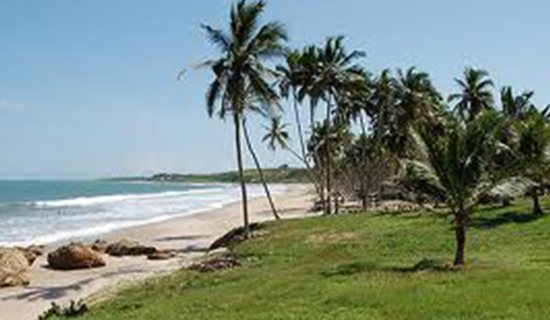

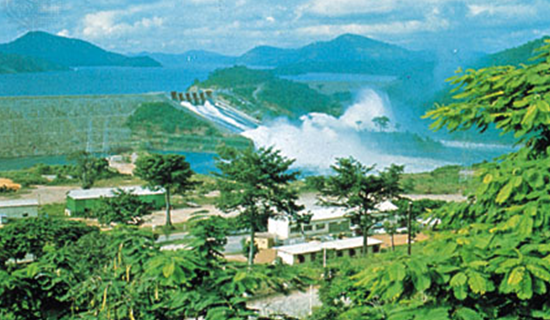
NATIONAL PARK
BOABENG-FIEMA MONKEY SANCTUARY
This small sanctuary of 4.4km2 was established in 1974 to help the local communities protect the resident black and white Colobus and Mona monkeys which are important to their cultural belief.
The monkeys are habituated to humans and large groups are seen easily in the forest and within Boabeng village itself. The butterfly fauna is unusually rich.
BUI NATIONAL PARK
his 1,821km2 park, gazetted in 1971, covers the catchment of the Black Volta River. The vegetation is typical Savannah woodland with gallery forest along river courses. It is particularly notable for the resident hippo population in the Black Volta River though a number of primates and antelope species are present along with a great variety of birds.
KAKUM NATIONAL PARK
Kakum National Park protects plant and animal treasures of the African tropical forest and is a haven for the casual visitor, birdwatcher, amateur botanist and ecotourist alike. Thirty kilometers north of Cape Coast via a paved road, you will find rare plant species in a spectacular environment where some trees reach heights of over fifty meters. After viewing the exhibits at the Visitor’s Center, the drama of the jungle comes alive as park guides provide insight into this complex ecosystem. You will learn about traditional forest product uses for medicine
and daily village life. The flora at ground level may be familiar to you as houseplants, and be sure to watch for one of the estimated 550 butterfly species. A beautiful butterfly, new to science, was discovered in Kakum in 1993, and has been appropriately named Diopetes kakumiú!
H.MOLE NATIONAL PARK
Mole Park, the largest eco-tourism site in the country, is located 170 kilometres west of Tamale in the West Gonja District. It is home to 93 mammalian species, 33 reptiles, nine amphibians and an estimated 300 birds species.
The mammals include some 600 elephants, 2,000 roam antelopes, 3,000 hartebeests, 4,000 waterbucks, 5,000 buffalo and some 6,000 warthogs. Uncounted lions, leopards, hyenas and various primates can also be seen in Mole.
A total of 600km of game protection and viewing roads have been developed within the Park.
LABARANGA MOSQUE
Labaragaga is situated 10 miles (16 km) west of Damongo, N/R and only about 5 miles to the Mole National Park (Dept of Game and wild life). In case you don know where Damongo is. It is about 72 miles west of Tamale. It is a common believe that this mosque is the oldest mosque in Ghana. Even the present generation think it was built my God. The villagers built another mosque which is similar to the one on the stamp where they go to pray or worship daily. The so-called ‘God built mosque’ also houses a holy koran which also is believed to descent from heaven. This holy book is read once in a year or so during a special ceremony. Many prominent moslems from Ivory Coast where the people of Larabanga claimed to have migrated from visit the village for such a function. It is a common believe that some coup makers in Ghan even visited the village for some blessings before they approached GBC. At least I knew Carlos Giwa and another soldier was Damongo were there before and after the attempted coup. The same mosque was on one of our bills. I guess the old 5 cedi note.
This same village has a stone which could not be moved away during the time the Wa-Sawla-Tamale road was constructed. That is each time it was moved, it kept coming back so they had to leave it and divert the road somehow. This portion of the road is popularly known as Larabanga SS now.
Here are some of the answers to some of your questions
First, the lrabanga Mosque. Larabanga is a small town in Western Gonja in Northern Region. It is a predominantly moslem town and had become famous because of the mosque which was built in the mode of buildings in the former Western Sudanese Empires. Boti Falls is in Eastern Region while Shama is in western region.


